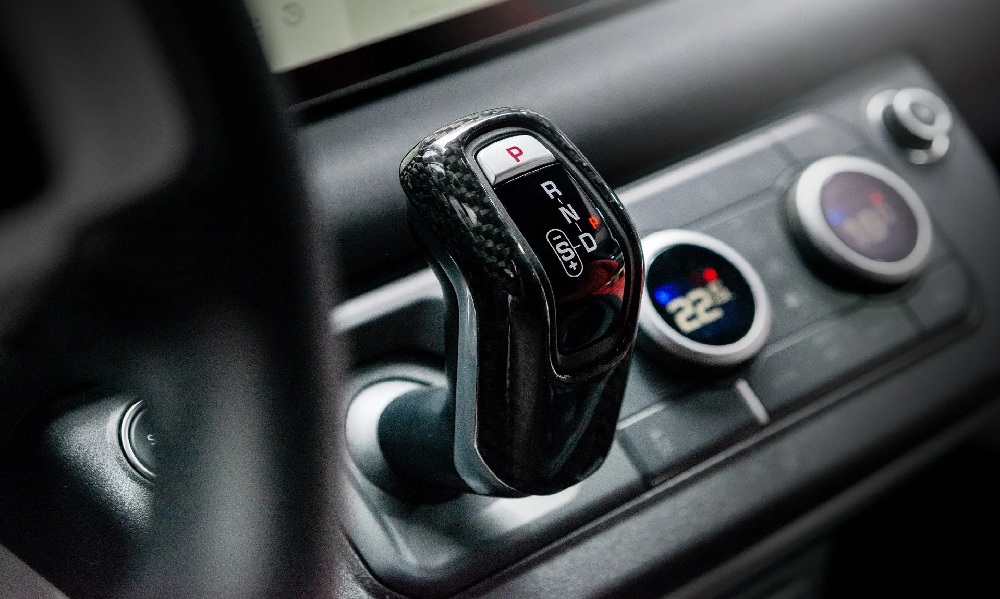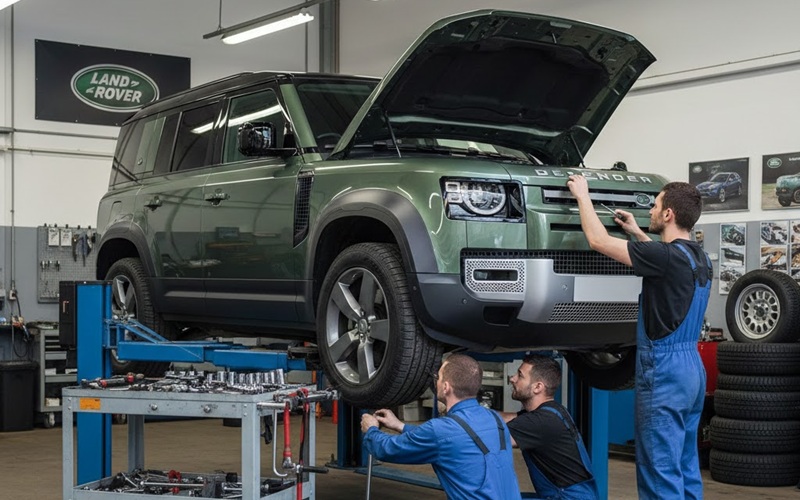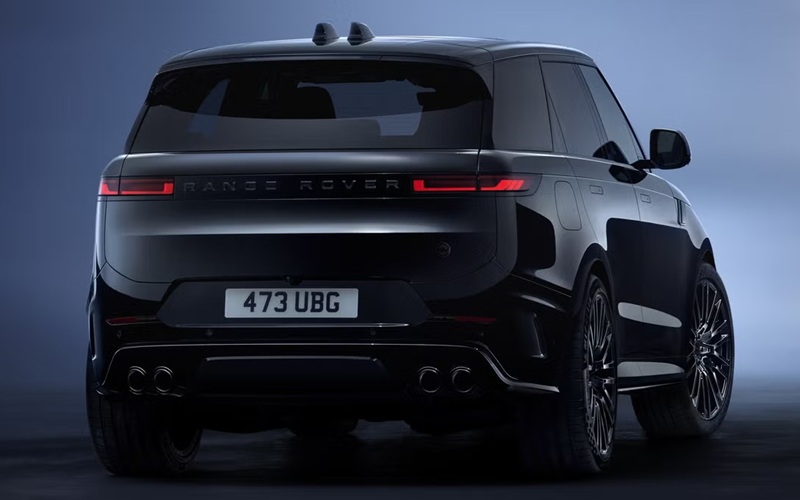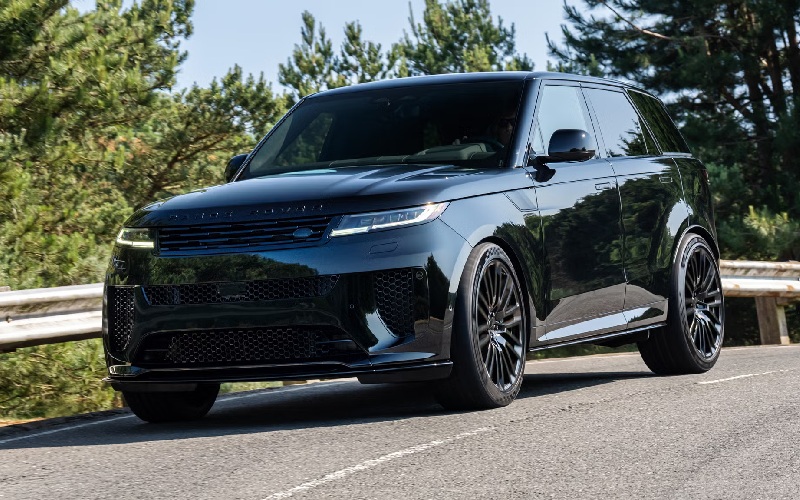Land Rover, renowned for its luxury SUVs and off-road capabilities, has consistently innovated in automotive technology, including its gearshift systems. This article gets into the intricacies of car gearshifts in Land Rover vehicles, exploring their evolution, types, and unique features.

Evolution of Gearshifts in Land Rover Vehicles
The Land Rover gearshift systems have evolved significantly since the brand’s inception:
Early Manual Transmissions:
- The first Land Rover models featured simple manual gearboxes.
- Typically 4-speed transmissions with a separate lever for engaging 4-wheel drive.
- Robust design suited for off-road use.
Introduction of Automatic Transmissions:
- Automatic transmissions were introduced in the 1980s.
- Early automatics featured a traditional column or floor-mounted shifter.
- Improved ease of use, especially in urban driving conditions.
Electronic Shift Controls:
- Late 1990s and early 2000s saw the introduction of electronic shift controls.
- Buttons and small levers replaced traditional large gear levers.
- Enhanced interior space and ergonomics.
Modern Rotary Gear Selectors:
- Introduced with the 2010 Range Rover Evoque.
- A circular dial that rises from the center console upon vehicle start-up.
- Provides a sleek, modern interface for gear selection.
Types of Gearshifts in Current Land Rover Models
Land Rover currently employs several types of gearshift systems across its range:
Rotary Gear Selector:
- Found in models like the Range Rover, Range Rover Sport, and Discovery.
- Electronically controlled, rising from the center console.
- Rotated to select drive modes: P (Park), R (Reverse), N (Neutral), D (Drive).
- Additional sport mode is often accessed by pushing the dial down and rotating it.
Electronic Gear Lever:
- Used in models like the Range Rover Velar and some Defender variants.
- A short lever that returns to center position after each selection.
- Often accompanied by paddle shifters on the steering wheel for manual gear control.
Traditional Gear Lever:
- Still found in some Land Rover models, especially those with manual transmissions.
- Typically floor-mounted, offering a more traditional driving experience.
- Common in older models and some variants of the Defender.
Paddle Shifters:
- Complementary to automatic transmissions in most modern Land Rovers.
- Located behind the steering wheel for manual gear selection.
- Allows for sportier driving and more control in off-road situations.
Technology Behind The Land Rover Gearshift Systems
Land Rover gearshift systems incorporate advanced technology:
Drive-by-Wire Technology:
- Electronic signals replace mechanical linkages.
- Allows for more precise control and integration with vehicle systems.
Intelligent Shift Programming:
- Adapts to driving style and conditions.
- Optimizes gear changes for performance, efficiency, and comfort.
Terrain Response Integration:
- Gearshift systems work in conjunction with the Terrain Response system.
- Automatically adjusts gear ratios and shift points based on selected terrain mode.
Safety Interlocks:
- Prevents accidental gear engagement.
- For example, the vehicle must be in Park and the brake pedal depressed to start the engine.
Unique Features of Land Rover Gearshifts
The Land Rover gearshift systems boast several unique features:
All-Terrain Progress Control (ATPC):
- Acts like a low-speed cruise control for off-road driving.
- Automatically manages the throttle and brakes, allowing the driver to focus on steering.
Hill Descent Control (HDC):
- Automatically controls vehicle speed on steep declines.
- Works in conjunction with the gearshift system to maintain optimal control.
Low Range Gearing:
- Many Land Rovers feature a low-range gearbox for extreme off-road conditions.
- Activated via a separate control, often near the main gear selector.
Dynamic Response:
- In models like the Range Rover Sport, the gearshift system adapts to dynamic driving modes.
- Provides faster, more aggressive shifts in sport modes.
Gearshift Ergonomics and Interior Design
Land Rover pays special attention to how gearshifts integrate with interior design:
Space Optimization:
- Rotary selectors and electronic levers free up center console space.
- Allows for more storage and a cleaner interior aesthetic.
Intuitive Operation:
- Gear selectors are for ease of use without looking.
- Tactile feedback and clear visual indicators enhance user experience.
Premium Materials:
- Gear selectors often feature high-quality materials like leather and brushed aluminum.
- Contributes to the overall luxury feel of the vehicle interior.
Ambient Lighting:
- Many models feature illuminated gear selectors.
- Enhances visibility and adds to the premium interior ambiance.
Off-Road Capabilities and Gearshift Systems
Off-road prowess is closely tied to its gearshift systems:
Terrain Response 2:
- Automatically selects the optimal driving mode based on terrain.
- Adjusts gearshift points and responsiveness accordingly.
Wade Sensing:
- When fording water (up to 900mm in some models), the gearshift system adapts.
- Maintains optimal gear and engine speed for water crossing.
Rock Crawl Mode:
- Specific gear ratios and shift points for extreme off-road conditions.
- Often engaged via the Terrain Response system in conjunction with low-range gearing.
Sand Mode:
- Allows for higher rev ranges and more responsive gear changes.
- Helps maintain momentum in loose sand conditions.
Maintenance and Care of Land Rover Gearshift Systems
Proper maintenance is crucial for the longevity of gearshift systems:
Regular Fluid Checks:
- Transmission fluid should be checked and replaced according to the service schedule.
- Typically every 60,000 to 80,000 kilometers, but can vary by model.
Software Updates:
- Electronic gearshift systems may require periodic software updates to ensure optimal performance.
- Ensures optimal performance and can address any known issues.
Mechanical Inspections:
- Regular inspections of gear linkages and mounts in models with traditional shifters.
- You should check electronic systems for proper operation and responsiveness.
Off-Road Maintenance:
- After extensive off-road use, inspect the gearshift system for debris or damage.
- Particular attention to seals and electrical connections in harsh conditions.
Future Trends in Land Rover Gearshift Technology
Land Rover continues to innovate in gearshift technology:
Enhanced Integration with Driver Assistance Systems:
- Future gearshift systems may work more closely with autonomous driving features.
- Potential for automated gear selection based on predictive road and traffic data.
Sustainable Materials:
- In line with the Land Rover sustainability goals, future gear selectors may incorporate more eco-friendly materials.
Haptic Feedback:
- Advanced haptic systems could provide more intuitive feedback to drivers.
- Potentially mimicking the feel of traditional mechanical shifters.
Gesture Control:
- Research into gesture-based controls could lead to new ways of interacting with gearshift systems.
Gearshift Systems in Hybrid and Electric Land Rovers
As Land Rover moves towards electrification, gearshift systems are evolving:
Simplified Gear Selection:
- Electric vehicles typically require simpler gear selectors (Drive, Reverse, Neutral).
- This simplification is reflected in the design of gear selectors in hybrid models.
Regenerative Braking Control:
- In hybrid and electric models, gear selectors often incorporate controls for regenerative braking intensity.
Integration with Electric Drivetrain:
- Gearshift systems in hybrids manage the transition between electric and combustion power.
- Ensures smooth operation and optimal efficiency.
Land Rover Gear Shifts: Luxury and Technology
The gearshift systems in Land Rover vehicles represent a harmonious blend of advanced technology, off-road capability, and luxury design. From the early days of rugged manual transmissions to the sleek, electronic rotary selectors of today, Land Rover has consistently innovated in this crucial area of vehicle control.
These systems not only facilitate the changing of gears but also integrate deeply with the Land Rover advanced terrain management and driver assistance features. They play a vital role in delivering the brand’s signature combination of on-road refinement and off-road prowess.
As automotive technology continues to evolve, particularly with the shift towards electrification, the Land Rover gearshift systems will undoubtedly continue to adapt and innovate. Future developments are likely to focus on even greater integration with vehicle systems, enhanced user interfaces, and adaptations for electric and hybrid powertrains.


